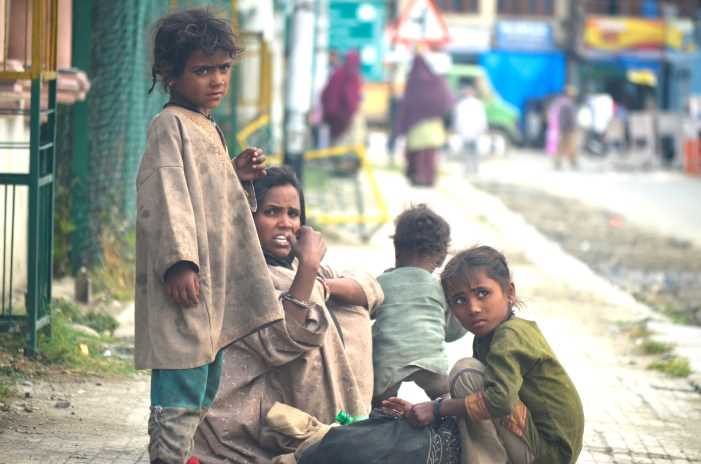Srinagar: Despite a blanket ban on begging, Srinagar continues to witness a growing presence of street beggars, especially around traffic signals, shrines, markets, and tourist hotspots. The persistent issue has raised concern among locals, who say the ban remains largely ineffective.
The problem has turned from an occasional sight to a daily nuisance, with areas like Hyderpora, Lal Chowk, Residency Road, Batamaloo, M.A. Road, Dargah Hazratbal, and Dalgate becoming major begging hotspots. Beggars are frequently seen operating in these high-traffic zones, often approaching motorists and pedestrians in groups, making it difficult for people to ignore their pleas.
“It’s become routine now—you stop at a signal and are immediately surrounded by children or elderly people knocking on your window,” said Mushtaq Ahmad, a resident of Hyderpora. “Sometimes it feels like harassment. You end up giving money just to be left alone.”
Many residents believe the issue is not random but organized. Several have pointed out that beggars work in shifts, often stationed at designated spots and times. “They follow tourists, use children to gain sympathy—it seems like a well-planned operation,” said Muneer Ahmad from Batamaloo. “This is a full-blown racket.”
This growing concern comes even as Srinagar recently became the first district in J&K to implement the central government’s SMILE (Support for Marginalized Individuals for Livelihood and Enterprise) scheme. Launched by the Ministry of Social Justice and Empowerment in December 2022, the initiative aims to rehabilitate beggars through vocational training, shelter, and long-term social integration.
According to Deputy Commissioner (DC) Srinagar, Dr. Bilal Mohi-Ud-Din Bhat, the district administration has established a fully equipped rehabilitation center in the Hawal area under the SMILE initiative. Set up in collaboration with the NGO Prayas, the facility currently houses 128 individuals and provides shelter, food, medical care, and vocational training in areas such as tailoring, bulb-making, and boutique work.
“This is a shift from punitive action to a more compassionate, welfare-based approach,” Dr. Bhat said. “Instead of arresting those found begging, we’re trying to offer them dignity and a chance to become self-reliant.”
Children rescued from street begging are also being enrolled in formal schools to help break the cycle of poverty and exploitation. Authorities believe this holistic model is a more sustainable way to tackle the root causes of begging.
However, despite the scheme’s noble intentions, residents say its impact on the ground has been limited so far. “The SMILE scheme sounds good on paper, but what we’re seeing on the streets tells a different story,” said Asgar, a resident of Sanat Nagar. “There are still groups of beggars at every major intersection.”
Dr. Bhat acknowledged the scale of the issue, stating that the limited capacity of existing facilities remains a major hurdle. “We’re doing everything we can, but the demand far exceeds the resources currently available. We’re looking into expanding the facility and increasing outreach,” he said.
An internal survey conducted by the NGO Prayas found that over 1,000 beggars are currently active across Srinagar, many of whom are undocumented. The numbers reportedly swell during the tourist season, as individuals from other states migrate to the city in search of alms.
Officials admit that data collection remains a significant challenge. “Beggars, unlike registered laborers, aren’t part of any formal system, which makes it difficult to track their numbers or origins,” said a senior official from the Social Welfare Department, requesting anonymity.
Despite blanket ban, Srinagar struggles with growing presence of street beggars

Leave a Comment
Leave a Comment







